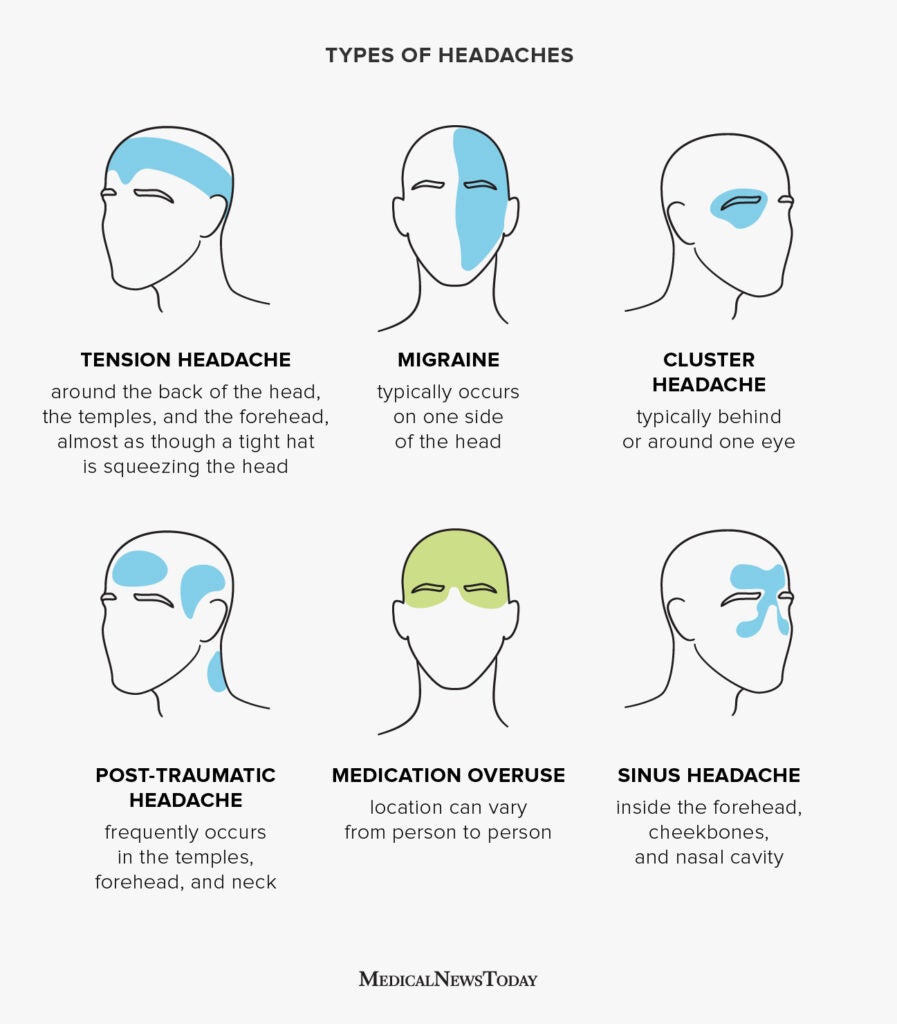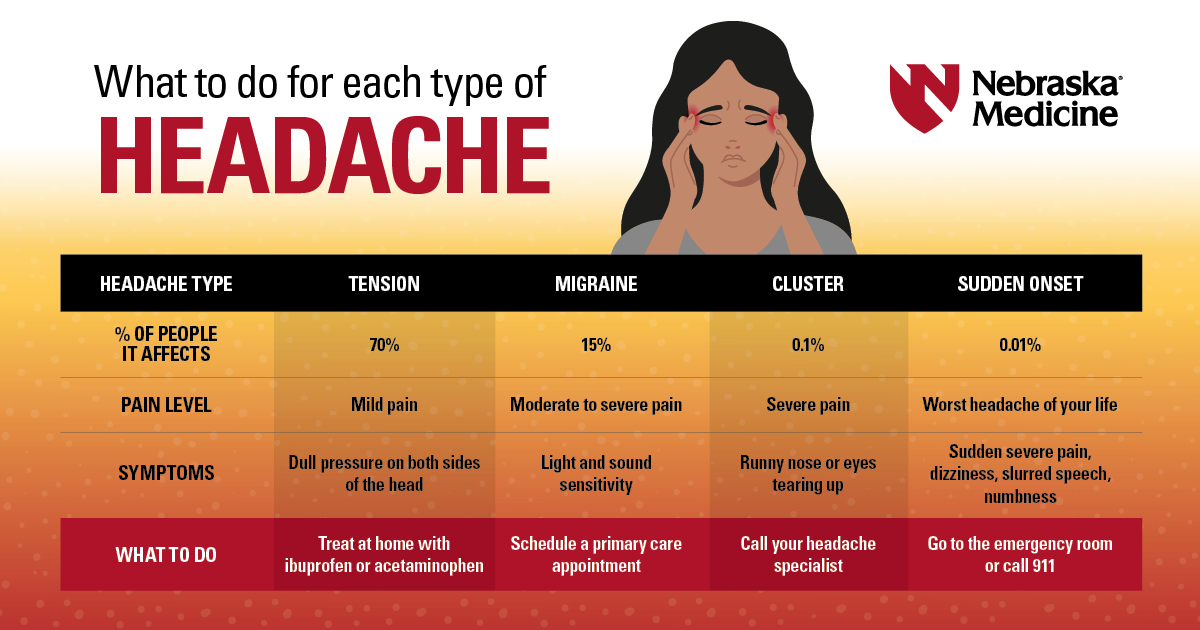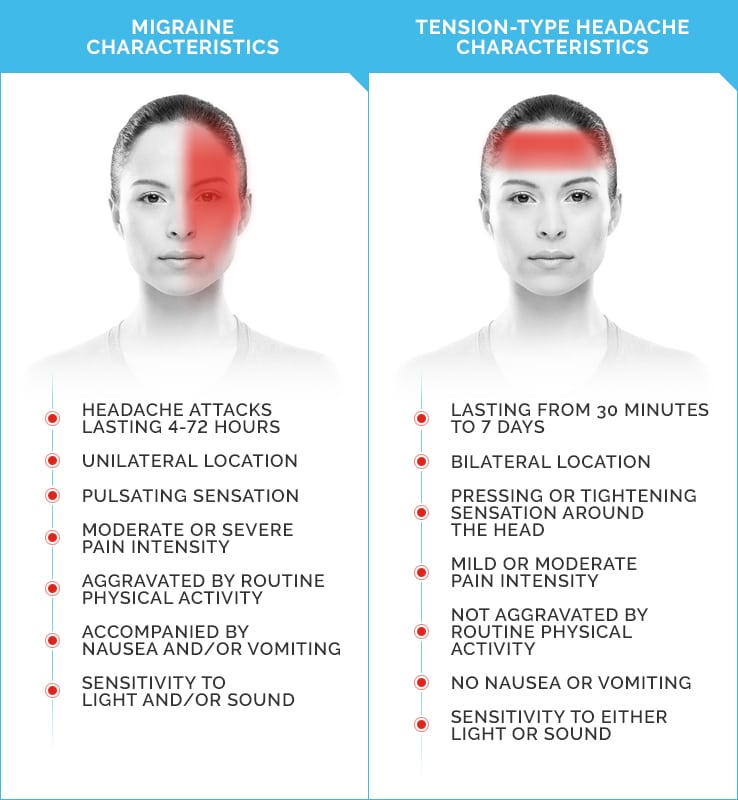Understanding Headaches vs. Migraines
Headaches and migraines are common ailments that can cause significant discomfort. While both conditions involve pain in the head, there are key differences between them.
A normal headache is often characterized by a dull or throbbing pain that is typically felt on both sides of the head. It is usually manageable with over-the-counter pain relievers and does not interfere significantly with daily activities.
On the other hand, migraines are neurological disorders that cause severe, pulsating headaches often accompanied by other symptoms such as nausea, sensitivity to light and sound, and visual disturbances. Migraines can be debilitating and may require specific medications for relief.
Understanding these distinctions is crucial for proper diagnosis and treatment. If you frequently experience severe headaches with additional symptoms, it’s important to consult a healthcare professional to determine if you have migraines rather than regular headaches.
Understanding the difference between normal headaches and migraines
:max_bytes(150000):strip_icc()/zhansen-5204218_finalfixedtext-fb02c35de14243acad280985e53ce37f.jpg)
Headaches and migraines may both cause head pain, but they have distinct differences. Normal headaches typically involve a dull or throbbing pain on both sides of the head. They can often be managed with over-the-counter pain relievers and do not significantly disrupt daily activities.
On the other hand, migraines are neurological disorders that result in severe, pulsating headaches accompanied by additional symptoms such as nausea, sensitivity to light and sound, and visual disturbances. Migraines can be debilitating and may require specific medications for relief. It is important to differentiate between the two because treatment approaches differ.
If you frequently experience severe headaches with these additional symptoms, it is advisable to consult a healthcare professional for proper diagnosis and treatment.
Also Read: Boost Your Heart Health: Top Foods to Include in Your Daily Diet
Common triggers for headaches and migraines
Headaches and migraines can be triggered by various factors. Some common triggers include:
- Stress: Emotional or physical stress can lead to tension headaches or migraines.
- Lack of sleep: Not getting enough sleep or irregular sleep patterns can trigger both types of headaches.
- Certain foods: Some people are sensitive to certain foods such as aged cheeses, chocolate, caffeine, and processed meats, which can trigger migraines.
- Hormonal changes: Fluctuations in hormone levels during menstruation, pregnancy, or menopause can trigger migraines in some individuals.
- Environmental factors: Exposure to bright lights, strong smells (like perfumes), loud noises, and changes in weather conditions can trigger migraines.
Identifying these triggers and making lifestyle modifications accordingly can help manage and prevent headaches and migraines effectively.
Recognizing Migraine Symptoms

Migraine symptoms can vary from person to person, but there are some common signs to look out for. These include throbbing or pulsating pain, usually on one side of the head, sensitivity to light and sound, nausea or vomiting, and blurred vision. Some people may also experience aura before the onset of a migraine attack, which can manifest as visual disturbances or tingling sensations. It is important to note that not all migraines will have an aura. Recognizing these symptoms can help differentiate a migraine from a regular headache and prompt appropriate management strategies. If you regularly experience these symptoms, it is advisable to consult with a healthcare professional for a proper diagnosis and personalized treatment plan.
Identifying common symptoms of migraines
Migraine symptoms can vary from person to person, but there are some common signs to look out for. These include throbbing or pulsating pain, usually on one side of the head, sensitivity to light and sound, nausea or vomiting, and blurred vision. Some people may also experience aura before the onset of a migraine attack, which can manifest as visual disturbances or tingling sensations. It is important to note that not all migraines will have an aura. Recognizing these symptoms can help differentiate a migraine from a regular headache and prompt appropriate management strategies. If you regularly experience these symptoms, it is advisable to consult with a healthcare professional for a proper diagnosis and personalized treatment plan.
Understanding the stages of a migraine attack

A migraine attack often consists of four distinct stages: prodrome, aura, headache, and postdrome.
The prodrome stage can occur hours or even days before the actual headache and is characterized by subtle changes in mood, energy levels, and appetite.
The aura stage is experienced by some migraine sufferers and involves neurological symptoms such as visual disturbances, tingling sensations, or difficulty speaking.
The headache stage is typically the most intense phase and can last anywhere from a few hours to several days. It is often accompanied by throbbing pain on one side of the head, sensitivity to light and sound, nausea or vomiting.
Lastly, the postdrome stage follows the headache phase and may leave individuals feeling drained or experiencing lingering symptoms such as fatigue or difficulty concentrating.
Understanding these stages can help individuals recognize when a migraine attack is imminent and take necessary steps for management.
Typical Migraine Triggers
:max_bytes(150000):strip_icc()/VWH_Illustration_Types-of-Migraines_Illustrator_Ellen-Lindner_Final-8186828b212c45218a84769de2f1acce.jpg)
Migraine triggers can vary from person to person, but there are some common factors that tend to provoke migraine attacks. Stress is a major trigger, as it can lead to muscle tension and increased sensitivity to pain. Sleep patterns play a role as well, with both lack of sleep and changes in sleep routine triggering migraines. Certain foods and drinks such as chocolate, caffeine, alcohol, and processed meats have been identified as potential triggers. Weather changes, particularly sudden shifts in temperature or barometric pressure, can also set off migraines for some individuals. Identifying these triggers and making necessary lifestyle adjustments can help reduce the frequency and intensity of migraine attacks.
Exploring common triggers for migraines such as stress, sleep patterns, and diet
Migraine triggers can vary from person to person, but there are some common factors that tend to provoke migraine attacks. Stress is a major trigger, as it can lead to muscle tension and increased sensitivity to pain. Sleep patterns play a role as well, with both lack of sleep and changes in sleep routine triggering migraines. Certain foods and drinks such as chocolate, caffeine, alcohol, and processed meats have been identified as potential triggers. Identifying these triggers and making necessary lifestyle adjustments can help reduce the frequency and intensity of migraine attacks.
How weather changes can trigger migraines

Weather changes, particularly drastic shifts in temperature or changes in barometric pressure, have been known to trigger migraines in some individuals. The exact mechanism behind this is not fully understood, but it is believed that these weather-related factors can affect the chemicals in the brain and blood vessels, leading to a migraine attack. Some people may experience migraines during hot and humid weather, while others may be triggered by cold temperatures or windy conditions. It’s important for individuals who are prone to migraines to pay attention to weather forecasts and take necessary precautions such as staying hydrated, wearing appropriate clothing, and avoiding extreme weather conditions when possible.
Seeking Medical Diagnosis
If you are experiencing persistent headaches, it is important to consult a healthcare professional for a proper diagnosis. They will be able to determine whether your headaches are normal or migraines. A thorough medical history and physical examination will be conducted, and the doctor may also order diagnostic tests such as MRI or CT scans to rule out other underlying conditions.
It is essential to seek medical attention if your headaches are frequent, severe, or interfere with your daily activities. A healthcare professional can help identify the specific triggers and patterns of your migraines and recommend appropriate treatment options.
Remember, early recognition and treatment of migraines can greatly improve your quality of life and help manage symptoms effectively. Don’t hesitate to reach out for support from healthcare professionals who specialize in migraine management.
When to consult a healthcare professional for persistent headaches

If you are experiencing persistent headaches, it is important to consult a healthcare professional for a proper diagnosis. You should seek medical attention if your headaches are frequent, severe, or interfere with your daily activities. Headaches that are accompanied by other symptoms such as dizziness, confusion, or difficulty speaking should also be evaluated by a healthcare professional. Additionally, if over-the-counter pain medications do not provide relief or if the intensity and frequency of your headaches increase suddenly, it is advisable to seek medical help. A healthcare professional can evaluate your symptoms, conduct a thorough examination, and recommend appropriate treatment options to manage your headaches effectively.
Diagnostic tests and tools for identifying migraines
When it comes to diagnosing migraines, healthcare professionals rely on a combination of patient history, symptoms, and diagnostic tests. While there is no specific test to definitively confirm a migraine diagnosis, certain tests can help rule out other potential causes of headaches.
One common tool used in diagnosing migraines is an imaging test called magnetic resonance imaging (MRI). This test uses powerful magnets and radio waves to create detailed images of the brain. It can help identify any abnormalities or structural issues that may be contributing to the migraines.
Another diagnostic tool is a blood test to check for certain markers associated with migraines. However, this test is not widely available and its results are not always conclusive.
Ultimately, the diagnosis of migraines relies heavily on the patient’s description of their symptoms and their medical history. Consulting with a healthcare professional who specializes in headaches or neurology is crucial for an accurate diagnosis.
Managing Migraine Attacks

When it comes to managing migraine attacks, there are several strategies that can help reduce the intensity and duration of symptoms. One effective approach is to identify and avoid triggers that may set off a migraine attack. This could involve keeping a headache diary to track potential triggers such as certain foods, stress levels, or changes in sleep patterns. Additionally, practicing relaxation techniques such as deep breathing exercises or meditation can help alleviate stress and tension that may contribute to migraines. Over-the-counter pain relievers, such as nonsteroidal anti-inflammatory drugs (NSAIDs), can provide temporary relief for mild migraines. For more severe cases, prescription medications specifically designed for migraines may be necessary. It’s important to work closely with a healthcare professional to develop an individualized treatment plan for managing migraine attacks effectively.
Effective strategies for managing and reducing the intensity of migraines

When it comes to managing migraine attacks, there are several strategies that can help reduce the intensity and duration of symptoms. One effective approach is to identify and avoid triggers that may set off a migraine attack. This could involve keeping a headache diary to track potential triggers such as certain foods, stress levels, or changes in sleep patterns. Additionally, practicing relaxation techniques such as deep breathing exercises or meditation can help alleviate stress and tension that may contribute to migraines. Over-the-counter pain relievers, such as nonsteroidal anti-inflammatory drugs (NSAIDs), can provide temporary relief for mild migraines. For more severe cases, prescription medications specifically designed for migraines may be necessary. It’s important to work closely with a healthcare professional to develop an individualized treatment plan for managing migraine attacks effectively.
Treatment options and lifestyle changes for migraine prevention
There are several treatment options and lifestyle changes that can help prevent migraines and reduce their frequency. One common approach is medication, including preventive medications such as beta blockers, antidepressants, or anti-seizure drugs. These medications can help reduce the frequency and severity of migraine attacks. In addition to medication, making certain lifestyle changes can also be beneficial. This includes maintaining a regular sleep schedule, managing stress levels through relaxation techniques or therapy, exercising regularly, and avoiding triggers such as certain foods or strong odors. It’s important to work closely with a healthcare professional to determine the most effective treatment plan for preventing migraines based on individual needs and medical history.
Note: This table is not exhaustive; there may be other treatment options available depending on individual circumstances. It’s important to consult with a healthcare professional for personalized recommendations
Conclusion
In conclusion, recognizing the signs that your normal headache might actually be a migraine is crucial for effective management and prevention. Understanding the difference between headaches and migraines, as well as identifying common triggers, can help individuals seek appropriate medical attention and implement strategies to reduce the frequency and intensity of migraine attacks. By working closely with healthcare professionals, individuals can explore treatment options such as medication and lifestyle changes to prevent migraines. Early recognition and treatment are key in managing migraines effectively. It is also important to seek support from resources such as support groups or online communities for guidance and understanding in coping with migraines. With proper care and management, individuals can find relief from this debilitating condition.
Importance of early recognition and treatment of migraines
Early recognition and treatment of migraines is crucial for improving the quality of life for individuals suffering from this debilitating condition. By identifying the symptoms and triggers early on, individuals can seek appropriate medical attention and implement strategies to prevent or reduce the frequency and intensity of migraine attacks. Delaying diagnosis and treatment can result in prolonged suffering, decreased productivity, and a negative impact on overall well-being. Early intervention allows healthcare professionals to develop personalized treatment plans that may include medications, lifestyle changes, or alternative therapies to manage migraines effectively. It is important to prioritize self-care, seek support from healthcare professionals, and educate oneself about migraines to take control of this condition and find relief.
Resources and support for individuals experiencing migraines
For individuals experiencing migraines, there are various resources and support available to help manage and cope with the condition. Support groups, both online and in-person, provide a space for individuals to connect with others who understand their experiences and offer valuable advice and encouragement. Additionally, there are numerous websites, books, and educational materials that provide information on migraines, treatment options, and self-care strategies. Healthcare professionals such as neurologists and headache specialists can offer specialized care and guidance tailored to each individual’s needs. It is important for those with migraines to reach out for support, stay informed about the latest research developments, and advocate for their own health.
FAQs
Q. What ingredients are needed to make Fuel Your Day with Espresso: Caffeine Kick Crumble Cake?
A. To make this delicious cake, you will need flour, sugar, butter, eggs, baking powder, espresso powder, milk, and vanilla extract.
Q. How much caffeine does each serving of the Caffeine Kick Crumble Cake contain?
A. Each serving of this cake contains approximately 80-100mg of caffeine, depending on the amount of espresso powder used.
Q. Can I adjust the sweetness of the cake to my preference?
A. Absolutely! You can adjust the amount of sugar used in the cake batter and crumble topping to suit your desired level of sweetness.
Q. How should the Caffeine Kick Crumble Cake be stored for freshness?
A. It is best to store this cake in an airtight container at room temperature. It should stay fresh for up to 3-4 days.
Q. Can I substitute espresso powder with brewed espresso in this recipe?
A. Yes, you can substitute espresso powder with brewed espresso, but you may need to adjust the amount of liquid in the recipe to compensate for the additional moisture.




